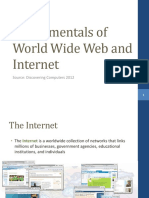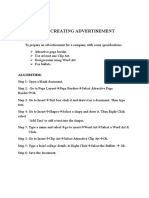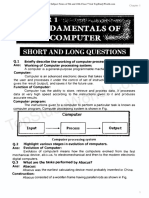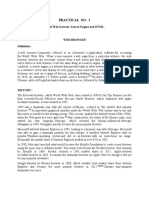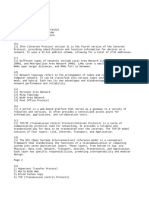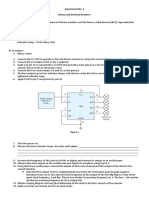100% found this document useful (1 vote)
3K views8 pagesWhat Is Web Browser
The document defines a web browser as software that allows users to locate, access, and display web pages. When a user enters a URL, the browser fetches data from the web server and displays the webpage. Browsers translate pages delivered via HTTP into readable content. Major browsers include Firefox, Chrome, Safari, and Internet Explorer. The first browser was created by Tim Berners-Lee in 1990. Mosaic introduced images in 1993, while Netscape Navigator and Internet Explorer popularized browsers in the mid-1990s. Google Chrome now dominates due to features like tabbed browsing and integrated search.
Uploaded by
MUHAMMAD UMERCopyright
© © All Rights Reserved
We take content rights seriously. If you suspect this is your content, claim it here.
Available Formats
Download as PDF, TXT or read online on Scribd
100% found this document useful (1 vote)
3K views8 pagesWhat Is Web Browser
The document defines a web browser as software that allows users to locate, access, and display web pages. When a user enters a URL, the browser fetches data from the web server and displays the webpage. Browsers translate pages delivered via HTTP into readable content. Major browsers include Firefox, Chrome, Safari, and Internet Explorer. The first browser was created by Tim Berners-Lee in 1990. Mosaic introduced images in 1993, while Netscape Navigator and Internet Explorer popularized browsers in the mid-1990s. Google Chrome now dominates due to features like tabbed browsing and integrated search.
Uploaded by
MUHAMMAD UMERCopyright
© © All Rights Reserved
We take content rights seriously. If you suspect this is your content, claim it here.
Available Formats
Download as PDF, TXT or read online on Scribd
/ 8




